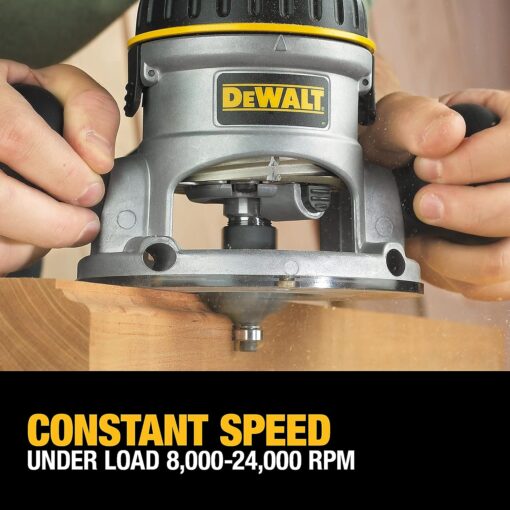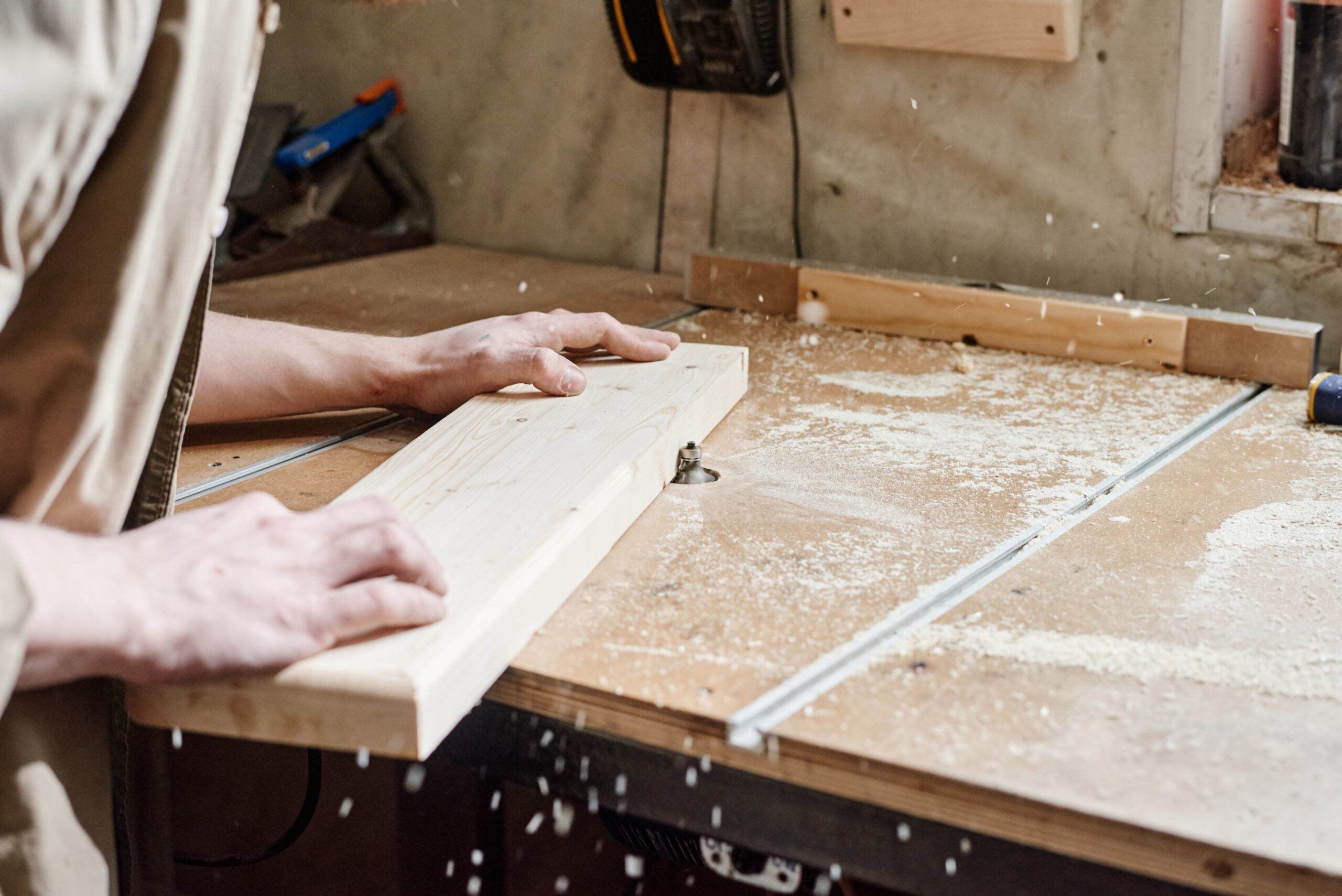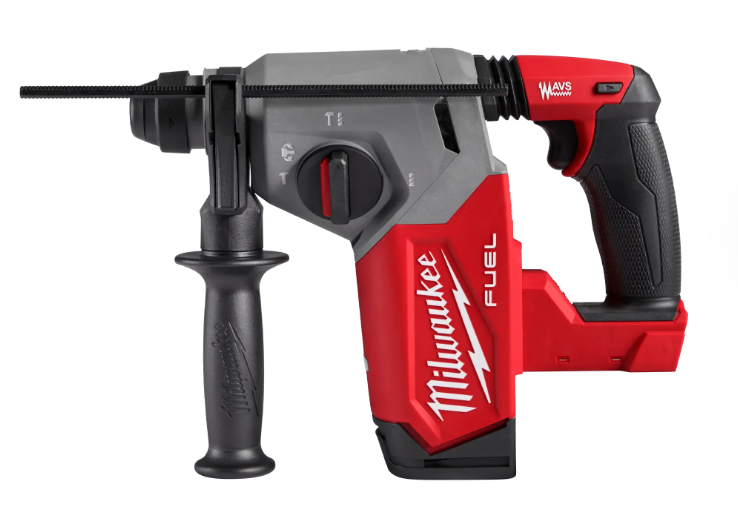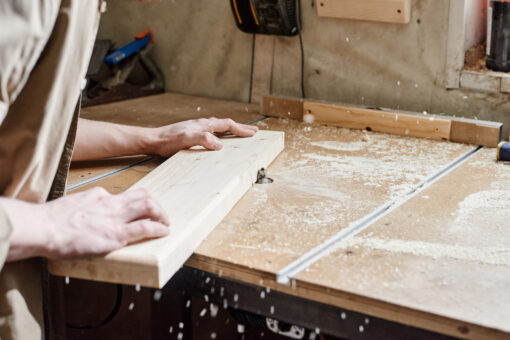Have you ever wondered how much power woodworking routers really need? Whether you’re a seasoned woodworker or just starting out, understanding the power requirements of this essential tool is crucial. In this article, we’ll explore the ideal power range for woodworking routers and delve into why it matters for your projects. By the end, you’ll have a clear understanding of how to choose the right amount of power for your woodworking endeavors. So, let’s dive in and discover the secrets behind the perfect power balance for woodworking routers!

Choosing the Right Power for Woodworking Routers
Woodworking routers are a versatile and essential tool for any woodworking enthusiast or professional. They come in various types and sizes, but one crucial factor to consider when purchasing a router is its power. Choosing the right power for your woodworking router is vital to ensure you have the necessary strength and performance for your woodworking tasks. In this article, we will explore the factors that affect power requirements, the different power measurements, common power ratings for woodworking routers, and how to determine your power needs based on your woodworking tasks.
Power Requirements
Before delving into the specifics of power measurements and ratings, it’s essential to understand the power requirements for woodworking routers. The power requirements vary based on several factors, such as the material types you’ll be working with, the size of the bits you’ll be using, the type of router, and the frequency of use.
Material Types
The type of material you’ll be working with plays a significant role in determining the power you’ll need for your woodworking router. Softer woods like pine or cedar will require less power compared to hardwoods like oak or maple. Additionally, if you frequently work with dense materials or composite materials, you may need a router with higher power to achieve optimal results.
Bit Size
The size of the router bit you plan to use is another important consideration when choosing the power of your woodworking router. Larger bits generally require more power to operate as they remove more material with each pass. If you primarily use smaller bits, you may be able to get by with a router of lower power. However, if you frequently work with larger bits, you’ll need a router with higher power to handle the increased workload.
Router Type
There are various types of routers available, such as fixed-base routers, plunge routers, and trim routers. Each type has its own power requirements, with plunge routers typically requiring more power due to their ability to handle more demanding tasks. Consider the type of woodworking projects you’ll be undertaking and choose a router that matches the power needs of those tasks.
Frequency of Use
Another factor to consider when determining the power requirements for your woodworking router is the frequency of use. If you’re a casual hobbyist who uses the router occasionally for small projects, a lower-powered router may suffice. However, if you’re a professional woodworker or someone who frequently engages in woodworking, investing in a higher-powered router is essential to ensure durability and consistent performance.
Understanding the Power Measurement of Woodworking Routers
Now that we have a basic understanding of the power requirements for woodworking routers, let’s delve into the power measurements used to quantify the strength of these tools. Three main power measurements are commonly used: power rating, horsepower (HP), amperage (A), and voltage (V).
Power Rating
The power rating of a woodworking router is a general indication of its overall power and capabilities. It is typically expressed in watts (W) and provides a broad overview of the router’s strength. The power rating takes into account factors such as the motor power, efficiency, and other technical specifications to determine the overall power of the tool.
Horsepower (HP)
Horsepower is another common power measurement used for woodworking routers. It measures the mechanical power output of the router and is typically denoted in horsepower (HP). One horsepower is equivalent to 746 watts. Higher horsepower ratings indicate greater power and strength, allowing routers to handle more demanding tasks with ease.
Amperage (A)
Amperage is a measurement of the electrical current flowing through the router. It indicates the amount of power consumed by the router during operation. Higher amperage ratings often correspond to higher power outputs and therefore allow routers to handle more challenging woodworking tasks.
Voltage (V)
Voltage refers to the electrical potential difference supplied to the router. The voltage rating determines the electrical power available to the router. Most woodworking routers operate on standard household voltages of 120V or 240V. Choosing the appropriate voltage rating is crucial for compatibility with your power supply and ensuring optimal performance.
Factors Affecting Power Requirements in Woodworking Routers
Several factors can affect the power requirements for woodworking routers. Understanding these factors will help you determine the suitable power level for your specific needs.
Router Speed
The speed at which the router operates can impact its power requirements. Higher router speeds generally require more power as they result in more rotation and cutting action. If you often work with high-speed operations, such as routing in harder materials or making intricate cuts, you should consider a router with higher power to maintain optimal performance.
Bit Type
Different router bits require varying power levels to operate effectively. For example, straight bits, which are commonly used in basic woodworking tasks, require less power compared to more complex bits like spiral bits or raised-panel bits. The complexity of the bit design and the type of cutting action it performs can increase the power needed to achieve clean and precise cuts.
Feed Rate
The feed rate, or how fast the router moves across the workpiece, can impact the power requirements of the router. A slower feed rate allows for more efficient material removal, reducing the strain on the router motor. Conversely, a higher feed rate may require more power to maintain consistent cutting performance. Consider your preferred feed rate and the tasks you’ll be performing to determine the appropriate power level.
Workpiece Hardness
The hardness of the material you’ll be working with can also affect the power requirements. Harder woods or materials require more power to cut through efficiently. If you frequently work with challenging materials, such as exotic hardwoods or dense composites, you’ll need a router with higher power to ensure smooth and consistent cuts.
Depth of Cut
The depth of cut refers to how deep the router bit penetrates into the workpiece. A deeper cut requires more power, as it involves removing more material at once. If your woodworking projects often involve deep cuts, such as making grooves or dadoes, you’ll need a router with sufficient power to handle the increased workload.
Common Power Ratings for Woodworking Routers
Woodworking routers are available in different power ratings to cater to various woodworking needs. Common power ratings include 1.5 HP, 2.25 HP, and 3.25 HP. Additionally, there are variable speed routers that allow you to adjust the power output to match your specific requirements.
1.5 HP
A 1.5 HP router is suitable for light to medium woodworking tasks. These routers offer sufficient power for basic shaping, edge routing, and other similar applications. They are typically compact and lightweight, making them ideal for hobbyists or those with limited workspace.
2.25 HP
2.25 HP routers provide a higher power output, allowing for more versatility and capability in woodworking projects. These routers can handle a wider range of applications, including heavier shaping, routing in hardwoods, and making precise cuts. They offer a good balance between power and portability, making them a popular choice among both hobbyists and professionals.
3.25 HP
3.25 HP routers are considered heavy-duty machines capable of tackling demanding woodworking tasks. These routers excel in cutting through dense and hard materials, making dadoes, and executing intricate designs. They are larger and heavier than lower-powered routers, providing stability and power for more professional-grade applications.
Variable Speed Routers
Variable speed routers allow you to adjust the power output to match your specific needs. These routers offer versatility and are suitable for a wide range of woodworking tasks. They allow you to slow down the router speed for more delicate cuts or increase the speed for efficient material removal. Variable speed routers are a popular choice for professionals who require adaptability in their woodworking projects.

Determining Power Needs Based on Woodworking Tasks
To ensure you choose the right power for your woodworking router, it’s important to evaluate the specific tasks and projects you’ll be undertaking. Here are some general guidelines for different woodworking needs:
Light to Medium Jobs
If you primarily engage in light to medium woodworking tasks, such as making basic furniture, crafting small decorative pieces, or creating simple joinery, a router in the range of 1.5 to 2.25 HP should suffice. These routers offer enough power to handle these tasks effectively without unnecessary strain on the motor.
Heavy-Duty Tasks
For those tackling heavy-duty woodworking tasks, such as cutting through thick hardwoods, making deep cuts, or working with dense materials, a router with a higher power rating of 2.25 to 3.25 HP is recommended. These routers have the necessary strength to handle the demanding workload and provide consistent performance.
Professional Use
If you’re a professional woodworker who frequently undertakes complex and demanding projects, investing in a high-powered router is crucial. A router with a power rating of 3.25 HP or higher will ensure the durability, performance, and precision required for professional-grade woodworking tasks.
CNC Routers
If you plan to use your router with a CNC (Computer Numerical Control) machine, it’s essential to choose a router with sufficient power to handle the automated cutting and carving process. CNC routers usually require routers with at least 2.25 HP or higher to ensure optimal performance.
Benefits and Drawbacks of Higher Power Routers
While higher power routers offer various advantages, it’s important to consider both the benefits and drawbacks before making your final decision.
Increased Performance
One significant benefit of higher power routers is their increased performance and capability. Higher power allows for faster and more efficient material removal, making your woodworking tasks easier and more productive. These routers can handle a wider range of materials and are less likely to bog down or overheat during demanding applications.
Versatility
Higher power routers provide versatility, allowing you to tackle a broader range of woodworking tasks. Whether you need to cut through thick hardwoods, shape intricate designs, or execute precise joinery, a higher-powered router will provide the strength and control you need for these applications.
Higher Cost
A potential drawback of higher power routers is their higher cost compared to lower-powered models. More power often comes with a higher price tag due to the advanced features, improved performance, and durability provided by these routers. It’s important to consider your budget and weigh the benefits against the cost when deciding on the appropriate power level for your woodworking needs.
Larger Size and Weight
Higher power routers tend to be larger and heavier than their lower-powered counterparts. While this increased size and weight provide stability and power, they may also be less practical for those with limited workspace or those who need a portable router for on-the-go woodworking. Consider your workspace limitations and portability needs when choosing a higher power router.
Considerations for Home Woodworking Workshops
When selecting the power for your woodworking router, there are a few additional considerations to keep in mind, particularly if you’ll be using the router in a home woodworking workshop.
Available Power Supply
Before purchasing a woodworking router, ensure that your home workshop has an adequate power supply to accommodate the router’s power requirements. Higher-powered routers may require a 240V electrical outlet, as opposed to a standard 120V outlet. Verify the available electrical outlets and consult an electrician if necessary to ensure proper power supply.
Workspace Limitations
Consider the size of your workshop and the available workspace when choosing a router power level. If you have limited space, a compact router with lower power may be more suitable. Additionally, ensure that your workshop layout allows for comfortable maneuvering and operation of the router, considering both the router’s size and any necessary work support or tables.
Budget Constraints
Budget is an important factor to consider when selecting the power level for your woodworking router. Higher-powered routers tend to be more expensive, so it’s crucial to find a balance between your ideal power requirements and your budget. Consider the specific tasks you’ll be performing and determine the necessary power level to accomplish those tasks effectively without stretching your budget.
Safety Precautions and Recommendations
Woodworking routers are powerful tools, so it’s essential to prioritize safety when using them. Here are some safety precautions and recommendations to keep in mind:
Proper Handling and Grip
Always maintain a firm grip on the router and use both hands when operating it. Ensure that the router is secured in the base and adjusted to the appropriate cutting depth. Avoid operating the router with one hand or with loose grip to prevent accidents or loss of control.
Eye and Ear Protection
Wear safety glasses or goggles to protect your eyes from flying debris, especially when using the router for cutting or shaping wood. Additionally, wear hearing protection, such as earplugs or earmuffs, to minimize exposure to the router’s noise, which can be damaging to hearing over time.
Dust Collection
Woodworking routers generate a significant amount of dust and wood particles during operation. To maintain a clean and healthy workspace, use a dust collection system or a shop vacuum to capture the dust and prevent it from entering your lungs. Dust extraction also helps keep the router’s motor and other components free from debris, ensuring optimal performance and longevity.
Maintaining Router Bits
Regularly inspect and clean your router bits to ensure optimal performance and prevent accidents. Keep the bits clean and sharp to ensure smooth cuts and reduce the strain on the router’s motor. Replace any dull or damaged bits promptly to avoid compromised results and potential injury.
Tips for Maximizing Router Power and Efficiency
To get the most out of your woodworking router’s power and ensure efficient operation, consider these tips:
Use Sharp and Appropriate Bits
Using sharp router bits is essential to maximize cutting performance and reduce strain on the router motor. Dull bits can cause tear-out, burn marks, and increased motor load. Additionally, ensure that you’re using the appropriate bit for the specific task at hand. Different bit designs and cutting edges are optimized for different applications, so choose the right bit for the desired outcome.
Optimize Feed Rate
Maintaining a consistent and appropriate feed rate can help maximize router power and efficiency. Too slow of a feed rate can cause burning or rough cuts, while too fast of a feed rate can strain the router’s motor and result in poor cutting quality. Experiment with different feed rates to find the optimal speed for each woodworking task.
Avoid Overloading
Be mindful of the workload you’re placing on the router to avoid overloading the motor. Overloading can lead to excessive heat, reduced performance, and potential motor burnout. If you notice the router struggling or the motor overheating, reduce the workload by adjusting the cutting depth or feed rate.
Regular Maintenance
Perform regular maintenance on your router to keep it in optimal condition. Clean the router after each use, removing any dust or debris that may have accumulated. Lubricate the router’s moving parts, such as the plunge mechanism or depth adjustment, to ensure smooth and precise operation. Additionally, periodically check the router’s motor brushes and replace them if excessively worn.
Conclusion
Choosing the right power for your woodworking router is crucial for achieving optimal performance and efficiency in your woodworking projects. Consider the material types you’ll be working with, the size of the bits you’ll be using, the type of router, and the frequency of use to determine your power requirements. Understand the power measurements of woodworking routers, such as power rating, horsepower, amperage, and voltage, to make an informed decision. Evaluate the factors affecting power requirements, such as router speed, bit type, feed rate, workpiece hardness, and depth of cut, and choose a router that matches your specific needs. Lastly, prioritize safety, maximize router power and efficiency with proper handling, maintenance, and task-specific tips. Happy woodworking!









